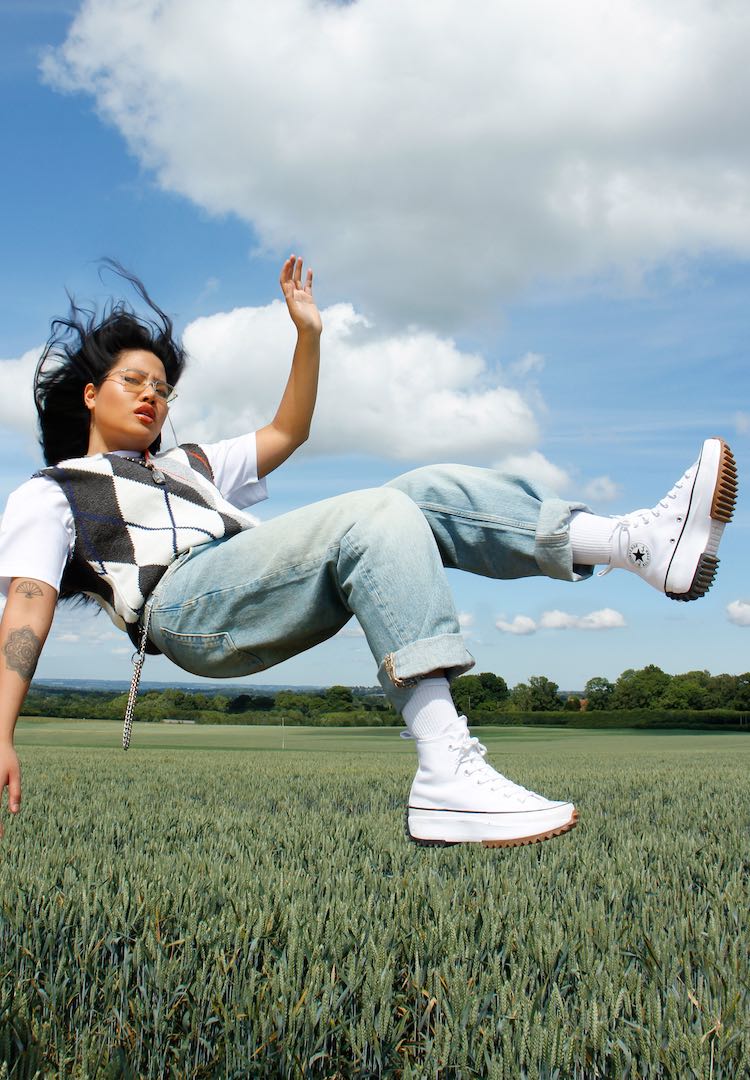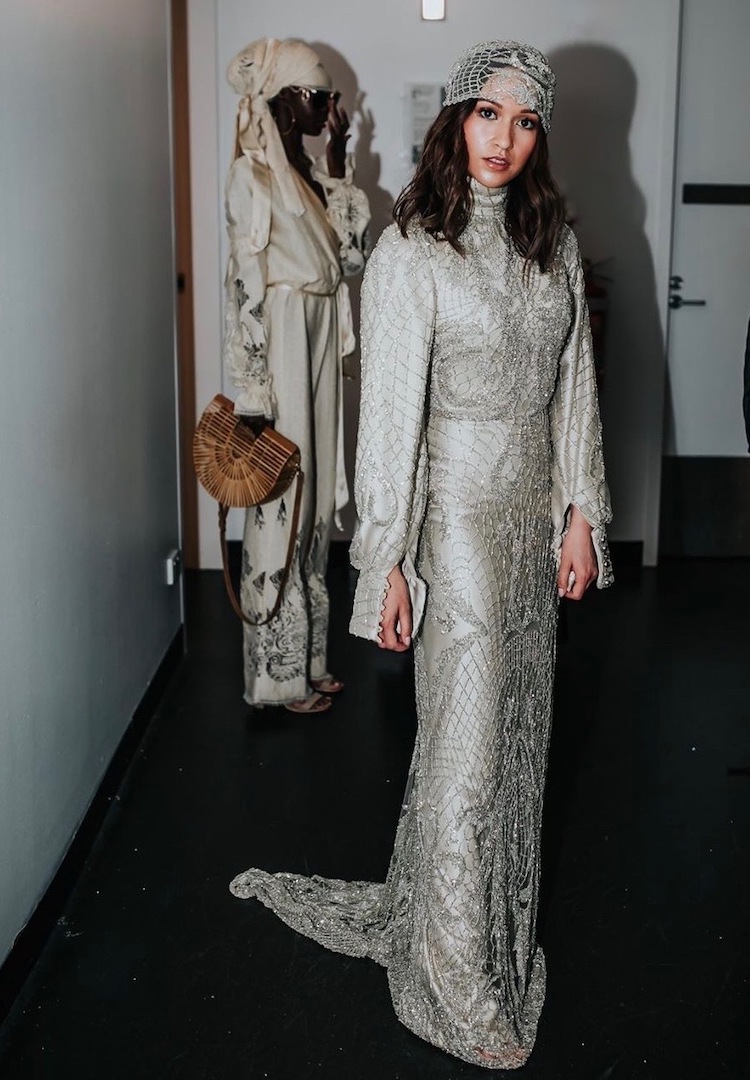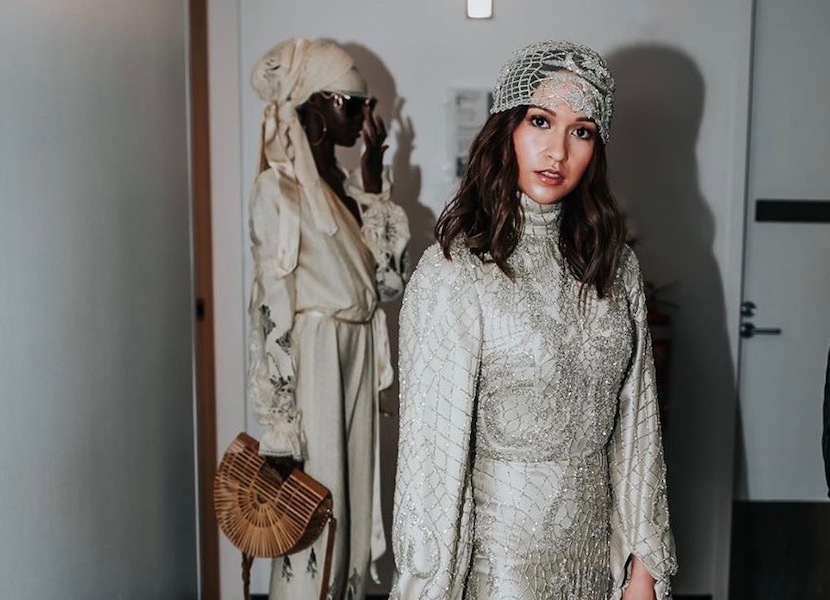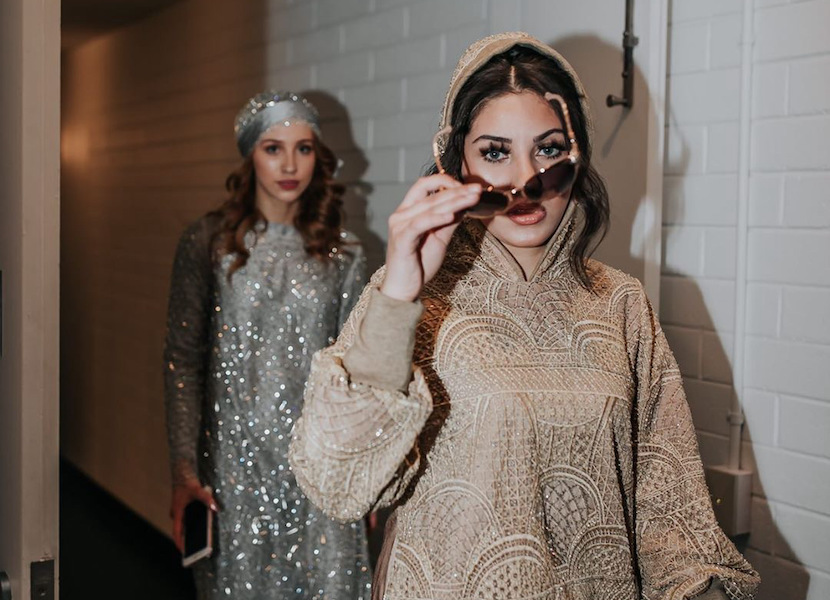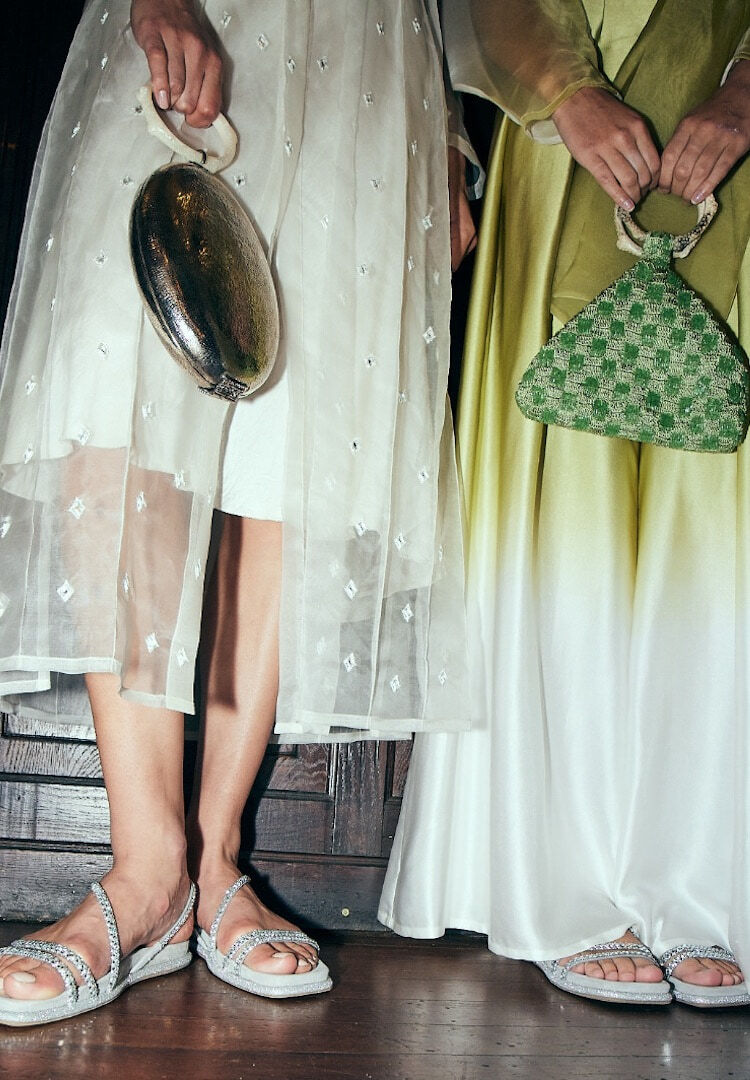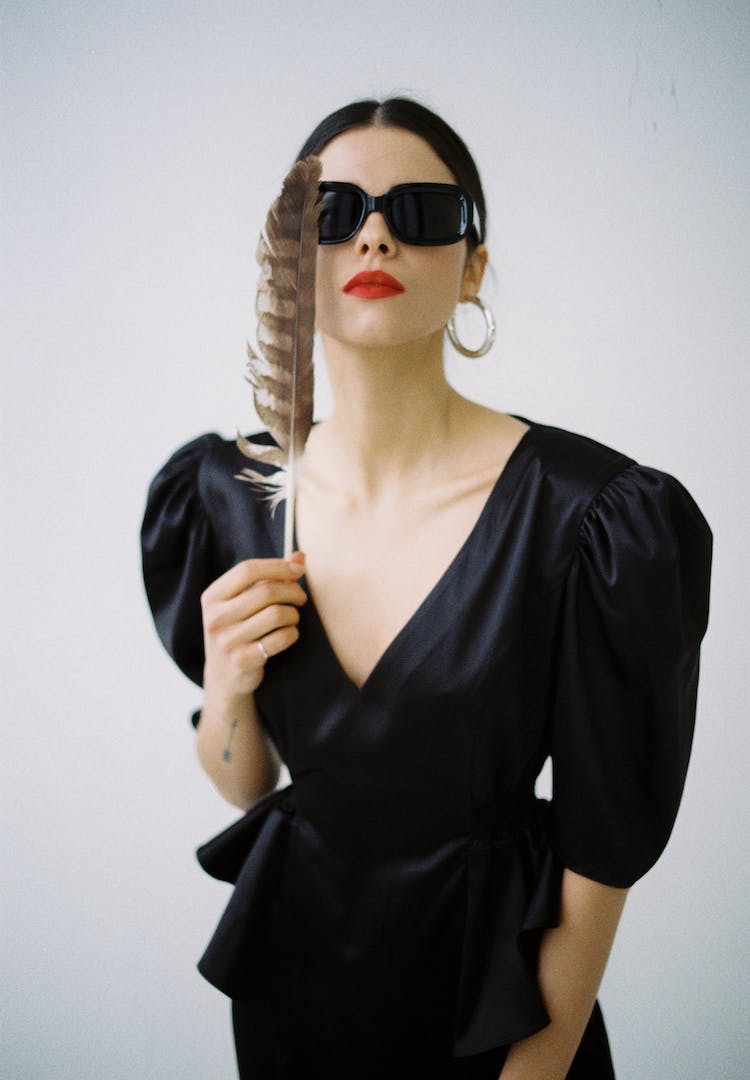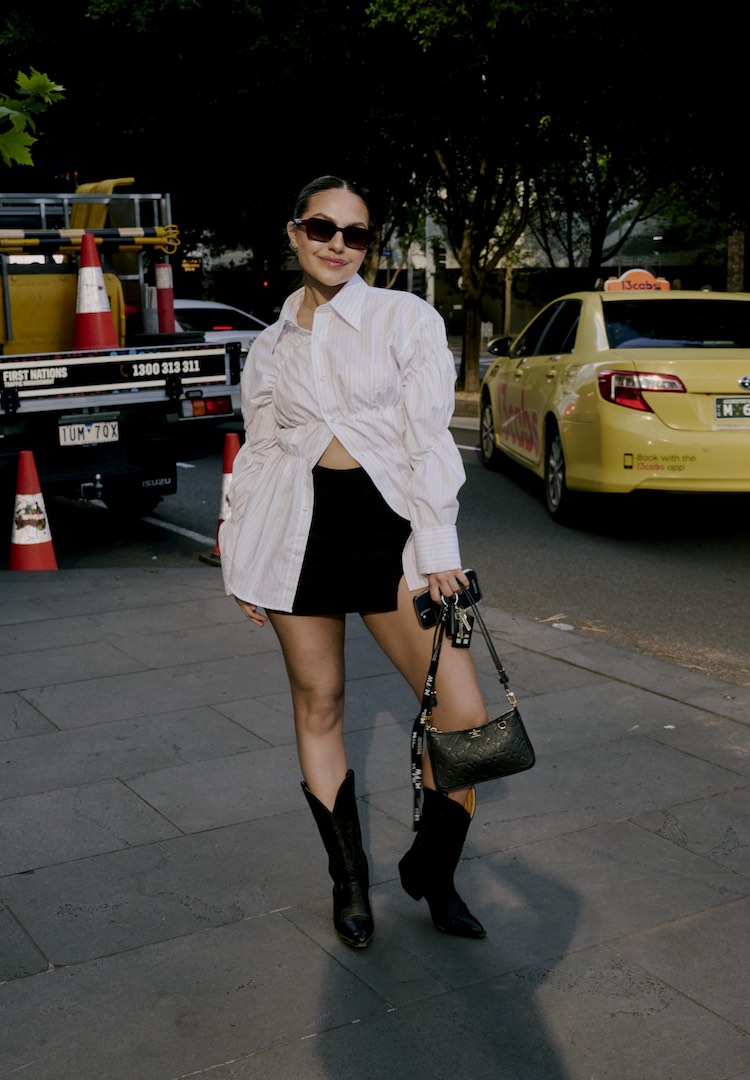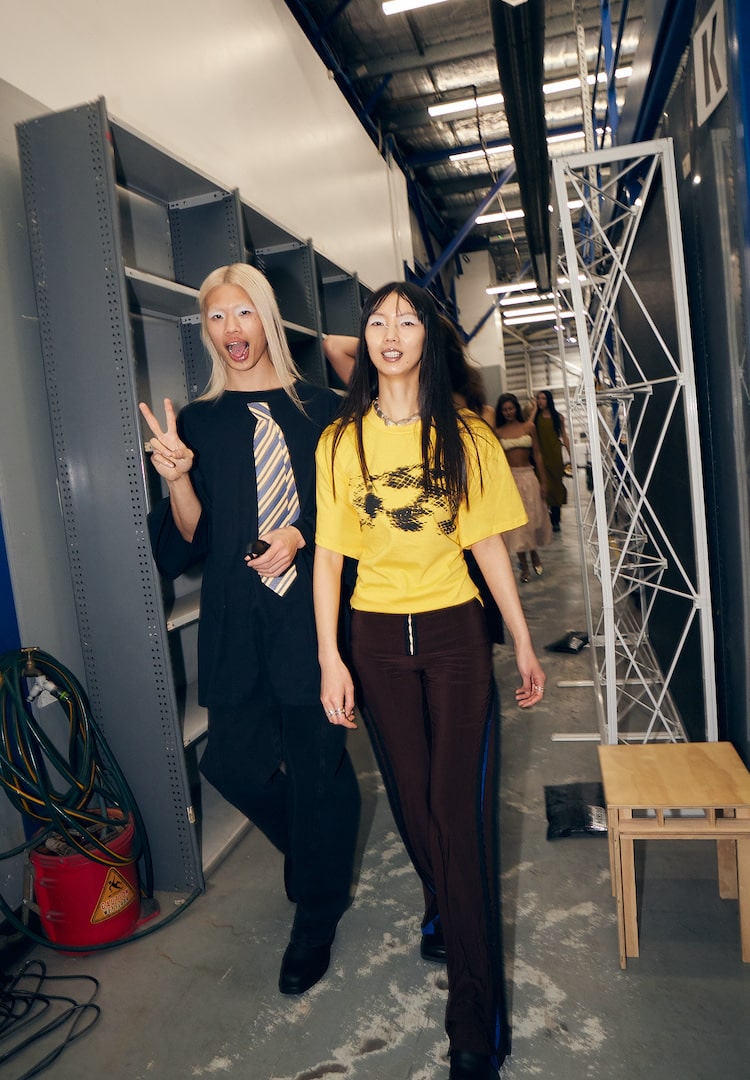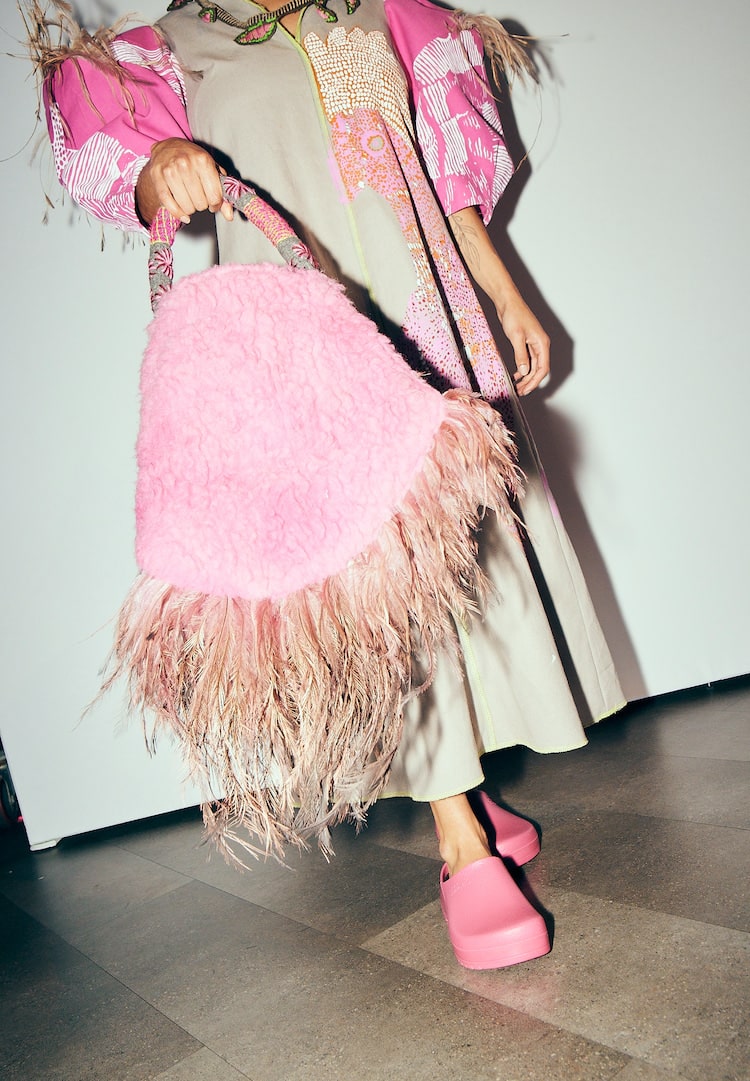How one designer’s struggles to find modest fashion in Australia led him to start his own label
PHOTOGRAPHY BY SEHER ISTER
WORDS BY JULIETTE CAPOMOLLA
Because everyone wants to be fashionable, no matter their faith.
Melbourne is a very diverse city. People move here from all over the world – from different countries, cultures, religions and communities. Melbourne is also the beating heart of Australia’s fashion industry. But these two iconic Melbourne traits haven’t always meshed.
Yusuf Liban, the co-owner and creative director of modest fashion label Sunna Style, knows this better than most. Coming from a Muslim household, Yusuf and his family grew up struggling to find clothing appropriate for their faith which also allowed them to express their personal style. Now, Yusuf is attempting to fill this hole in the Australian market by specifically catering to the modest fashion consumer.
The label, and the modest fashion sector in Australia as a whole, has gone from strength to strength in recent years. In 2019, Melbourne Fashion Week collaborated with Yusuf to bring us their debut Modest Fashion Runway, a testament to both the growing demand for modest fashion and the value Australian society increasingly places on diversity and inclusion.
Now in its second year, the event will be live-streamed to showcase a curated selection of modest fashion designers and panellists. I spoke to Yusuf about collaborating with Melbourne Fashion Week, how he got his start in the industry and the state of modest fashion in Australia today.
How did the Modest Fashion Runway start?
Once I completed my studies at university, I pursued my passion for fashion. I applied for numerous universities in Australia and my portfolio was actually rejected, which was really difficult at the time. I didn’t understand why, but I realised it was because modesty was not mainstream in Australia at that time. Because of my social media presence and [because] I knew what I was doing, I was invited to London Fashion Week, in London’s Modest Fashion Week, so that kind of still gave me hope. I headed out to London and headlined a men’s collection there and ended up in Vogue magazine.
Then, I returned to Melbourne in 2018 and understood that there was demand for the modest community to be established in Australia. I was trying to see how to establish a community in Australia when I was approached by Melbourne Fashion Week, and we collaborated to establish the first Modest Fashion Runway. I believe this is because my vision with modesty was in line with Melbourne Fashion Week’s sense of diversity and culture, and we both wanted to understand how to engage in all faiths, cultures and communities in a current fashion conversation.
Can you tell us a bit about yourself and how you got into the industry?
I actually studied pathology and laboratory studies, [so] it was very, very different. I’m of African descent so studying science is basically a must. My parents wanted me to have a great education so I did study that for them but I told them, “At least give me a year or two to pursue fashion”.
After I finished high school, I went to India to learn about the religion, and I found design. The rest of my friends were at schoolies and my mother told me “That’s not the best thing”, and I agreed with her. And so I went to India and that’s where I found my passion for design and for fashion. When I came back to Australia, I was studying at RMIT University and I was wearing my designs. I won’t say everyone but, at least every four or five people were asking me, Muslims and non-Muslims, “Hey, where did you buy these from?” because it was not seen before.
The idea of designing in the modest industry was [also] a buildup from an indirect experience of growing up in Australia, which is very different to back at home. I was raised in a household of eight religious sisters. I would constantly hear them complain about the lack of options in clothing that would appeal to their fashion sense, because everyone wants to look good but then also adhere to their faith. They really do want to dress modestly, but struggle to find clothes that cater to their needs.
I’m a Melburnian designer and my designs got called to London Modest Fashion Week before Melbourne Fashion Week. This was something I realised was a loophole, with my fashion experience and me knowing that the demand for modesty is needed in Australia. Then I worked with Melbourne Fashion Week and we established this amazing event.
What is the state of modest fashion in Australia?
Definitely now modest fashion is becoming more inclusive. Australia is one of the leading markets for modest fashion and most of the world’s biggest modest fashion players are Australian. Not only is Australia leading the way in terms of designers but retailers as well. Australian modest fashion retailers have pioneered the way for the global market and the trends usually begin from Australia.
View this post on Instagram
Who are the key players?
The key players of the modest fashion industry are the influencers, the designers and the predominantly female-driven landscape of entrepreneurs. The industry is very dynamic and ever-changing, and the boundaries of modest fashion are always being redefined. Some examples of Australian-based key players are influencers such as Nawal Sari and Yasmin Jay, as well as designers like Hijab House and Asiyam.
Is the industry engaging more with modest fashion?
So, so much more. There is a greater acceptance of modest fashion in the mainstream fashion industry, with hijabi models now featuring in mainstream ad campaigns and catwalks from Paris and New York. The boundary between modest and mainstream fashion has been blurred and we are seeing crossovers between both industries. The mainstream industry is even taking influence from modest fashion such as including headscarves in their collection and taking inspiration from the traditional abaya. Even the big brands at the moment, like Nike, H&M and Asos, they are all engaging with modest influencers and modest models. I think modest fashion is really the trend that mainstream fashion is heading towards.
View this post on Instagram
What do you see as the future for modest fashion and M/FW’s Modest Fashion Runway?
The future of modest fashion is bright. Modest fashion will become mainstream fashion. It will become the new normal. Modest fashion is here to stay. We will see the industry grow to record levels and even more innovation than ever before. We will see the emergence of powerful global modest brands and designers that may dominate the space. You’ll also see the acceptance of hijab in all facets of the fashion world from fitness to bridal to maternity wear.
We will soon be presenting this runway at global catwalks and continue to showcase and represent modest looks from diverse backgrounds, cultures and lifestyles. We understand the need and demand for this. In our inaugural year last year, we had supermodel Adut Akech as our ambassador. We will continue to work with superstars in all industries to promote and celebrate modest fashion.
What can we expect from the Melbourne Fashion Week event?
Modest Fashion Runway 2020 is going virtual. The event is very innovative. Our team was able to put together a live event including international and national designers, an amazing lineup of panellists who are leading the modest fashion industry and we’ve also engaged emerging Melburnian designers to give them that platform.
M/FW’s Modest Fashion Runway will stream online from 6-9pm on November 28. To find out more, head here.

